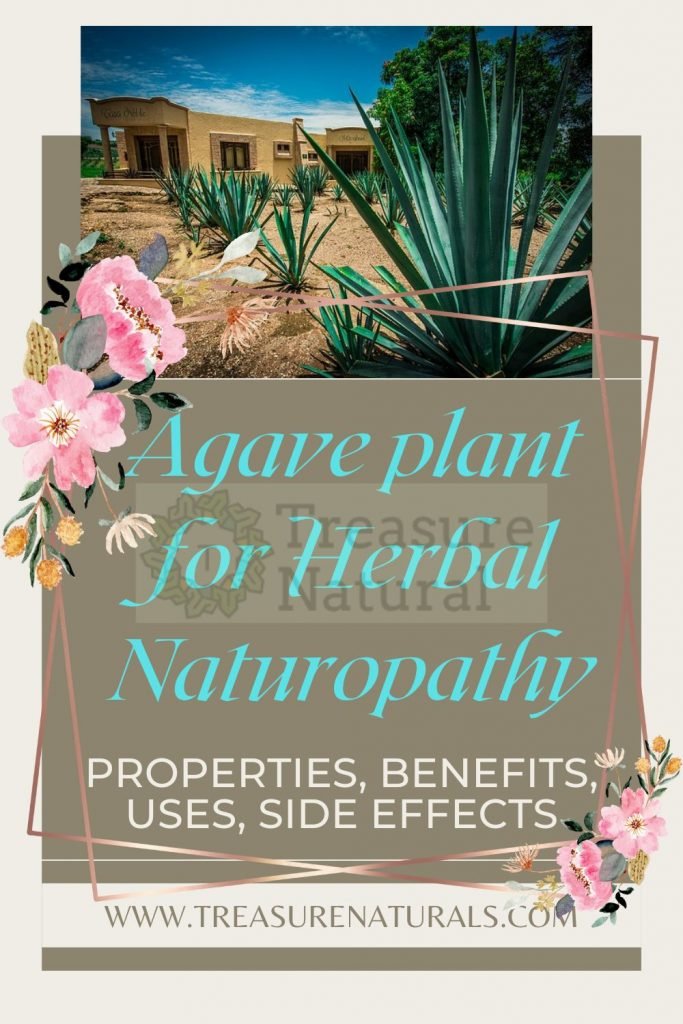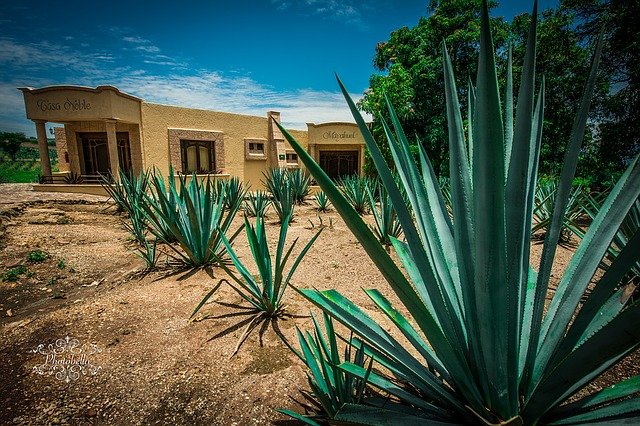
Agave is an ornamental plant, with purifying and digestive properties and used to produce syrups, drinks and textile fibers.
Agave is a plant native to Central America, very important for the life of local populations. Today it is used in various fields for its beneficial properties: laxative, against osteoporosis and anti-diabetic, among others. Let’s get to know it better.
Properties of the agave
Agave is a perennial succulent plant that belongs to the Agavaceae family. Similar to succulents in structure, bushy “rosette” and aesthetics, it differs from these for the absence of thorns.
Agave is often used for ornamental purposes to decorate parks and gardens but it also boasts a traditional therapeutic use.
In particular, in the countries of origin, agave leaves are exploited for their properties:
- Diuretics;
- purifying;
- anti-inflammatory.
The properties of agave are attributed to the presence of a phytocomplex that includes:
- Inulin;
- pectins;
- echogenin (a saponin);
- organic acids.
Agave species
There are numerous species and varieties of agave, which vary from 15/20 centimeters in height, up to two and a half meters. The leaves are always fleshy and fibrous, with an apical spine.
In the agave plant the leaves are united in a large rose, from which a woody floral stem develops. The agave flower is a large inflorescence, consisting of many yellow colored flowers.
To be able to admire an agave in bloom, however, it is necessary to wait a long time, as this plant can take over ten years to bloom. After flowering, the agave plant dies, which is why its majestic flower is called the flower of death.
Among the most used species we find:
- Agave sisalana;
- Agave fourcroydes
used to obtain a textile fiber – sisal – and to extract echogenin, used in the pharmaceutical industry.
The Agave tequilana is also very exploited, used in South America for the production of tequila, also known as American agave or blue agave, due to the almost blue color of its leaves.
Benefits of agave
In addition to being used as an ornamental plant, agave is known for its medicinal properties, which are beneficial to health.
Its use is linked to the local populations of Central America and already widespread at the time of the Aztecs, where it was also called “the tree of wonders”.
Already then, as today, the pulp of the agave leaves was used to treat:
- Intestinal inflammations;
- liver disorders;
- digestive problems
And externally, to heal skin irritations, wounds and burns.
Thanks to its inulin content, agave can also help to:
- Reduce cholesterol;
- promote the sense of satiety;
- improve digestion
It also contributes to intestinal health, restoring the bacterial flora and thus strengthening the immune system.
The presence of mineral salts and trace elements such as iron, calcium and magnesium, makes the agave also useful in combating osteoporosis.
Finally, the very low glycemic index of agave makes this plant a suitable remedy in case of diabetes.
In the past, agave was used as a daily food, in the form of sweetening syrup, but also for the preparation of typical dishes or as fodder for animals.
Drinks such as aguamiel and pulque were obtained and still are produced today, obtained through fermentation processes. Distilled, agave takes the name of mescal or tequila.
The use that is now best known is that in the form of sweetening juice or agave syrup.
Contraindications of agave
The insides of the leaves and the fresh sap in some species, especially the American agave, contain substances that in contact with the skin can cause dermatitis.
Be careful when buying the well-known agave syrup and which one you choose: the lowest value of fructose found in agave nectar is 55%, a figure that is far from low, reaching up to more than 90%.
In fact, not everything is produced in a natural way, therefore the benefits could be lost, also due to the thermal processes used in the processing.
The recommended intake limit is still around 25 grams per day, if you do not consume other foods with added sugars.
Habitat and cultivation of the agave
Agaves are native to the southern portion of North America, the Caribbean islands, and the northern part of Central America, with a greater concentration in present-day Mexico. In Italy it grows spontaneously in the center-south, in sandy places, on the coastal dunes, in uncultivated land, along the roadsides.
It is a resistant plant, with few needs, therefore the cultivation of agave is simple both in the garden and in pots. When you decide to grow agave in pots, however, it is essential not to exceed it with irrigation and stagnation of water, which could lead to its death.
If well cared for, agave can live a long time: also known as the “century plant“, this plant is able to survive for several tens of years.
The fibers obtained from the leaves of numerous species have been the main reason for the diffusion of agaves in the world; they are used for the manufacture of ropes, nets, baskets, clothes, blankets, carpets, bags, hats and other everyday objects.
Legislative notes and curiosities
The inclusion in natural food supplements of agave plant extracts, in particular the leaves and roots, to counteract disorders such as joint function, discomfort related to the menstrual cycle, menopause and how immunostimulating. The leaves of the agave, according to popular belief, would be useful against the evil eye.
What can be done with agave?
From agave it is possible to obtain sweetening syrups, drinks such as tequila and pulque, textile fibers (sisal) used to produce mats. Ecogenin, a saponin used in the pharmaceutical industry, is also extracted from the juice of the decorticated leaves, subjected to fermentation.
Agave leaves are used to prepare infusions, powders and alcoholic tinctures to be used internally and externally for their healing properties.
What is the difference between aloe and agave?

Aloe and agave have a similar appearance, although they are different species that belong to different families. In fact, both are succulent plants, characterized by fleshy, long leaves with thorny edges and tips.
Unlike agave, aloe leaves are rounder and fuller due to the presence of gel, while in agave the leaves are fibrous inside and flatter.
Additionally, aloe leaves are lighter green, uniform, or dotted with darker or lighter spots. Agave leaves are darker and often have longitudinal yellow hues.






